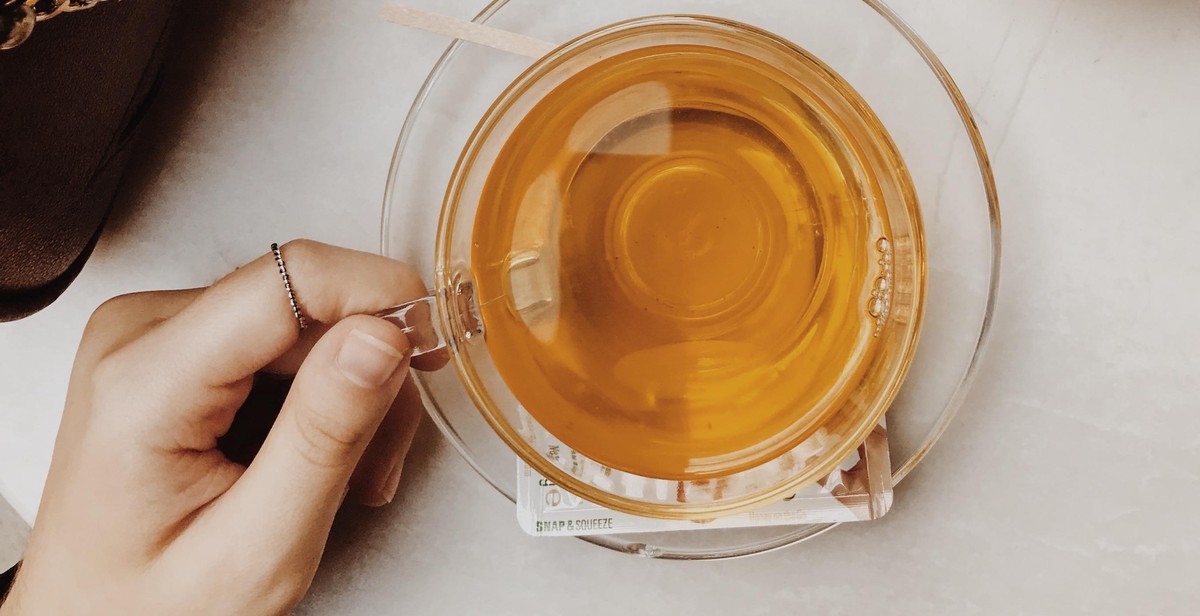How to Appreciate and Identify Different Types of Oolong Tea
Oolong tea is a traditional Chinese tea that is made from the leaves of the Camellia sinensis plant. It is known for its unique flavor and aroma, and is highly sought after by tea connoisseurs around the world. Oolong tea is partially fermented, which gives it a distinct taste that is somewhere between green and black tea.
There are many different types of oolong tea, each with its own unique flavor profile and characteristics. Some of the most popular types of oolong tea include Tie Guan Yin, Da Hong Pao, and Wuyi Rock.
Appreciating Oolong Tea
Appreciating oolong tea involves using all of your senses. When brewed correctly, oolong tea should have a pleasant aroma, a smooth and complex flavor, and a beautiful color. To appreciate oolong tea, it is important to pay attention to the tea’s appearance, aroma, and taste.
Identifying Different Types of Oolong Tea
Identifying different types of oolong tea can be challenging, especially for beginners. However, there are a few key factors to look for when trying to identify oolong tea. These factors include the tea’s shape, color, aroma, and taste.
- Shape: Oolong tea leaves are usually rolled or curled into tight balls or twists.
- Color: Oolong tea can range in color from light green to dark brown, depending on the level of oxidation.
- Aroma: Oolong tea should have a pleasant, floral aroma that is unique to each type of tea.
- Taste: Oolong tea should have a smooth, complex flavor that is neither too bitter nor too sweet.
In this article, we will explore the different types of oolong tea in more detail, and provide tips on how to appreciate and identify each type. Whether you are a seasoned tea connoisseur or a beginner, this article will provide you with all the information you need to enjoy the rich and complex flavors of oolong tea.

What is Oolong Tea?
Oolong tea is a type of tea that sits between green and black tea in terms of oxidation. It is made from the leaves of the Camellia Sinensis plant, which is the same plant that is used to make black, green, and white teas.
Oolong tea is known for its complex flavor profile, which can range from floral and fruity to woody and nutty. The flavor of oolong tea is influenced by many factors, including the cultivar of the tea plant, the growing conditions, and the production process.
Oolong Tea Production Process
The production process for oolong tea is more complex than that of green tea but less complex than that of black tea. The process involves several steps:
- Withering: The freshly picked tea leaves are spread out in the sun or in a cool, shaded area to wither. This process removes some of the moisture from the leaves and allows them to become more pliable.
- Rolling: The withered leaves are rolled by hand or by machine to bruise the edges of the leaves. This process releases enzymes and starts the oxidation process.
- Oxidation: The bruised leaves are allowed to oxidize in a cool, humid environment. The oxidation process can range from 5% to 80%, depending on the desired flavor profile of the tea.
- Firing: The oxidized leaves are fired in a hot oven to stop the oxidation process and dry the leaves. This step also helps to develop the flavor of the tea.
Types of Oolong Tea
There are many different types of oolong tea, each with its own unique flavor profile. Some of the most popular types of oolong tea include:
| Type of Oolong Tea | Flavor Profile |
|---|---|
| Tie Guan Yin | Floral, fruity, and sweet |
| Da Hong Pao | Woody, nutty, and smoky |
| Wuyi Yancha | Mineral, earthy, and full-bodied |
| Dong Ding | Roasted, caramel, and creamy |
Each type of oolong tea has its own unique brewing requirements, and the flavor profile can vary depending on the brewing method. However, all oolong teas should be brewed with water that is between 180°F and 200°F for 2-3 minutes.

Appreciating Oolong Tea
Oolong tea is a unique type of tea that is appreciated for its complex taste and aroma. To fully appreciate oolong tea, it’s important to understand the factors that affect its taste and aroma and how to taste it properly.
Tasting Oolong Tea
The first step in appreciating oolong tea is to taste it properly. Here’s how:
- Use a small teapot or gaiwan to brew the tea. This allows you to control the temperature and steeping time more easily.
- Use fresh, filtered water that is just below boiling point (around 90-95°C).
- Add the tea leaves to the teapot or gaiwan, using around 3-5g of tea per 150ml of water.
- Pour the hot water over the leaves and steep for around 30-60 seconds for the first infusion.
- Pour the tea into a cup or aroma cup and smell the aroma before tasting.
- Sip the tea and let it roll around your mouth, paying attention to the taste and texture.
- Swallow the tea and note the aftertaste and any lingering flavors.
- Repeat the process for subsequent infusions, adjusting the steeping time and temperature as necessary.
Factors Affecting Oolong Tea Taste and Aroma
The taste and aroma of oolong tea can vary widely depending on several factors:
| Factor | Description |
|---|---|
| Terroir | The environmental factors that affect the tea plant, including soil, climate, altitude, and humidity, can all impact the taste and aroma of oolong tea. |
| Cultivar | The specific tea plant variety used to make the oolong tea can also affect its taste and aroma. Different cultivars have different flavor profiles. |
| Processing | The way the tea leaves are processed can greatly impact the taste and aroma of oolong tea. Factors like oxidation level, rolling, and roasting can all affect the final product. |
| Water Quality | The quality of the water used to brew the tea can also affect its taste. Hard water, for example, can make the tea taste bitter or astringent. |
| Brewing Method | The way the tea is brewed, including water temperature, steeping time, and the amount of tea leaves used, can all impact its taste and aroma. |
By understanding these factors and how they impact the taste and aroma of oolong tea, you can better appreciate the nuances of this unique and complex tea.

Identifying Different Types of Oolong Tea
Oolong tea is a type of tea that falls between green and black tea. It is partially fermented and has a unique flavor profile. There are different types of oolong tea, each with its own distinct taste and aroma. Here are some of the most popular types of oolong tea:
Tie Guan Yin
Tie Guan Yin is a type of oolong tea that originated in China’s Fujian province. It has a floral and fruity flavor and a sweet aroma. The tea leaves are tightly rolled into small balls, which unfurl when brewed.
Da Hong Pao
Da Hong Pao is a highly prized oolong tea that comes from the Wuyi Mountains in China. It has a rich, smoky flavor with hints of fruit and honey. The tea leaves are dark and twisted, and the brewed tea has a reddish-brown color.
Wuyi Rock Oolong
Wuyi Rock Oolong is another type of oolong tea from the Wuyi Mountains. It has a complex flavor with notes of chocolate, caramel, and honey. The tea leaves are twisted and curled, and the brewed tea has a reddish-brown color.
Phoenix Dan Cong
Phoenix Dan Cong is a type of oolong tea from Guangdong province in China. It has a fruity and floral flavor with a hint of sweetness. The tea leaves are long and twisted, and the brewed tea has a golden color.
Taiwanese Oolong
Taiwanese Oolong is a type of oolong tea that comes from Taiwan. It has a light, floral flavor with a hint of fruit. The tea leaves are tightly rolled, and the brewed tea has a yellow-green color.
| Type of Oolong Tea | Origin | Flavor |
|---|---|---|
| Tie Guan Yin | China’s Fujian province | Floral and fruity |
| Da Hong Pao | Wuyi Mountains, China | Rich and smoky with hints of fruit and honey |
| Wuyi Rock Oolong | Wuyi Mountains, China | Complex with notes of chocolate, caramel, and honey |
| Phoenix Dan Cong | Guangdong province, China | Fruity and floral with a hint of sweetness |
| Taiwanese Oolong | Taiwan | Light and floral with a hint of fruit |
